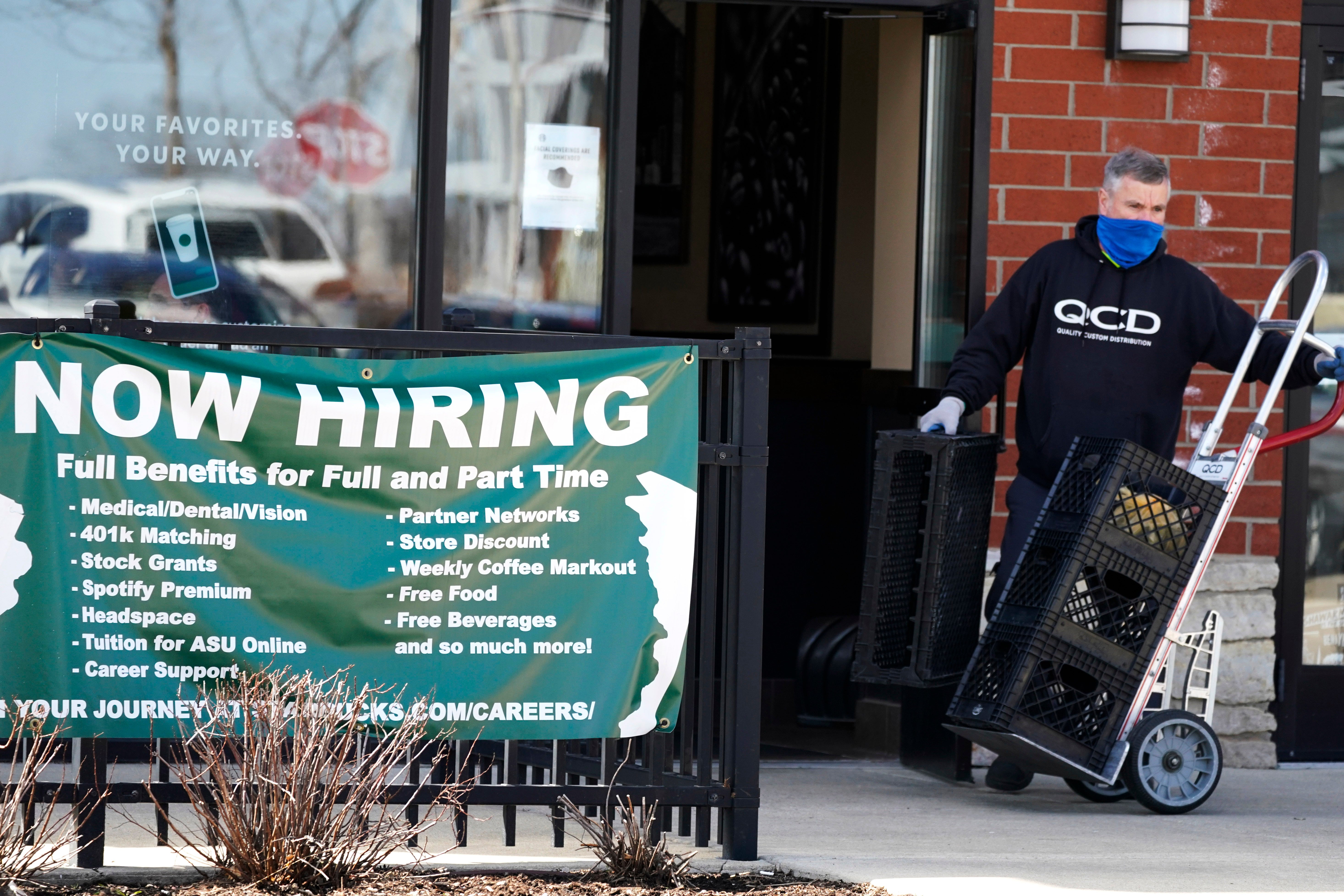Fewer Americans apply for jobless benefits last week
Fewer Americans applied for jobless aid last week as the number of Americans collecting unemployment benefits remains near five-decade lows

Your support helps us to tell the story
From reproductive rights to climate change to Big Tech, The Independent is on the ground when the story is developing. Whether it's investigating the financials of Elon Musk's pro-Trump PAC or producing our latest documentary, 'The A Word', which shines a light on the American women fighting for reproductive rights, we know how important it is to parse out the facts from the messaging.
At such a critical moment in US history, we need reporters on the ground. Your donation allows us to keep sending journalists to speak to both sides of the story.
The Independent is trusted by Americans across the entire political spectrum. And unlike many other quality news outlets, we choose not to lock Americans out of our reporting and analysis with paywalls. We believe quality journalism should be available to everyone, paid for by those who can afford it.
Your support makes all the difference.Fewer Americans applied for jobless aid last week with the number of Americans collecting unemployment benefits already near five-decade lows.
Applications for unemployment benefits fell by 8,000 to 210,000 for the week ending May 21, the Labor Department reported Thursday. First-time applications are generally representative of the number of layoffs.
The four-week average for claims, which smooths out some of the weekly volatility, ticked up from the previous week to 206,750.
The total number of Americans collecting jobless benefits for the week ending May 14 rose slightly from the previous week, to 1,346,000. Last week that number stood at 1,315,000, the fewest since in more than five decades.
American workers are enjoying historically strong job security two years after the coronavirus pandemic plunged the economy into a short but devastating recession. Weekly applications for unemployment aid have been consistently below the pre-pandemic level of 225,000 for most of 2022, even as the overall economy contracted in the first quarter and concerns over inflation persist.
Earlier this month, the government reported America’s employers added 428,000 jobs in April, leaving the unemployment rate at 3.6%, just above the lowest level in a half-century. Hiring gains have been strikingly consistent in the face of the worst inflation in four decades, with employers adding at least 400,000 jobs for 12 straight months.
Inflation may be the only thing hotter than the U.S. job market. Earlier this month, the government reported that U.S. producer prices soared 11% in April from a year earlier, a hefty gain that indicates high inflation will remain a burden for consumers and businesses in the months ahead.
Inflation at the consumer level eased slightly in April after months of relentless increases but remained near a four-decade high. Consumer prices jumped 8.3% last month from a year ago, just below the 8.5% year-over-year surge in March, which was the highest since 1981.
Earlier in May, the Federal Reserve intensified its fight against the worst inflation in 40 years by raising its benchmark short-term interest rate by a half-percentage point, signaling further large rate hikes to come. The increase in the Fed’s key rate, its most aggressive move since 2000, raised it to a range of 0.75% to 1%, the highest point since the pandemic struck in March of 2020.